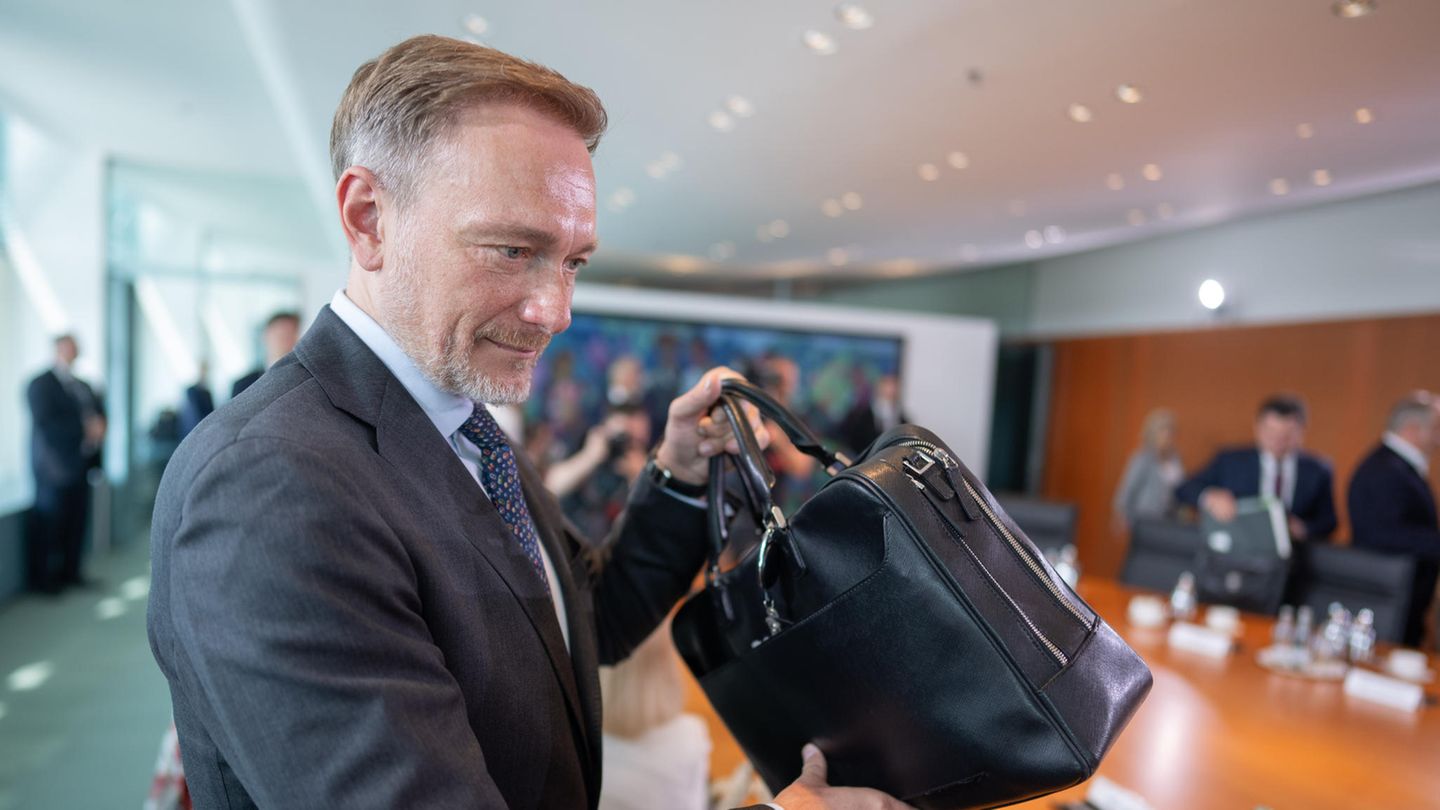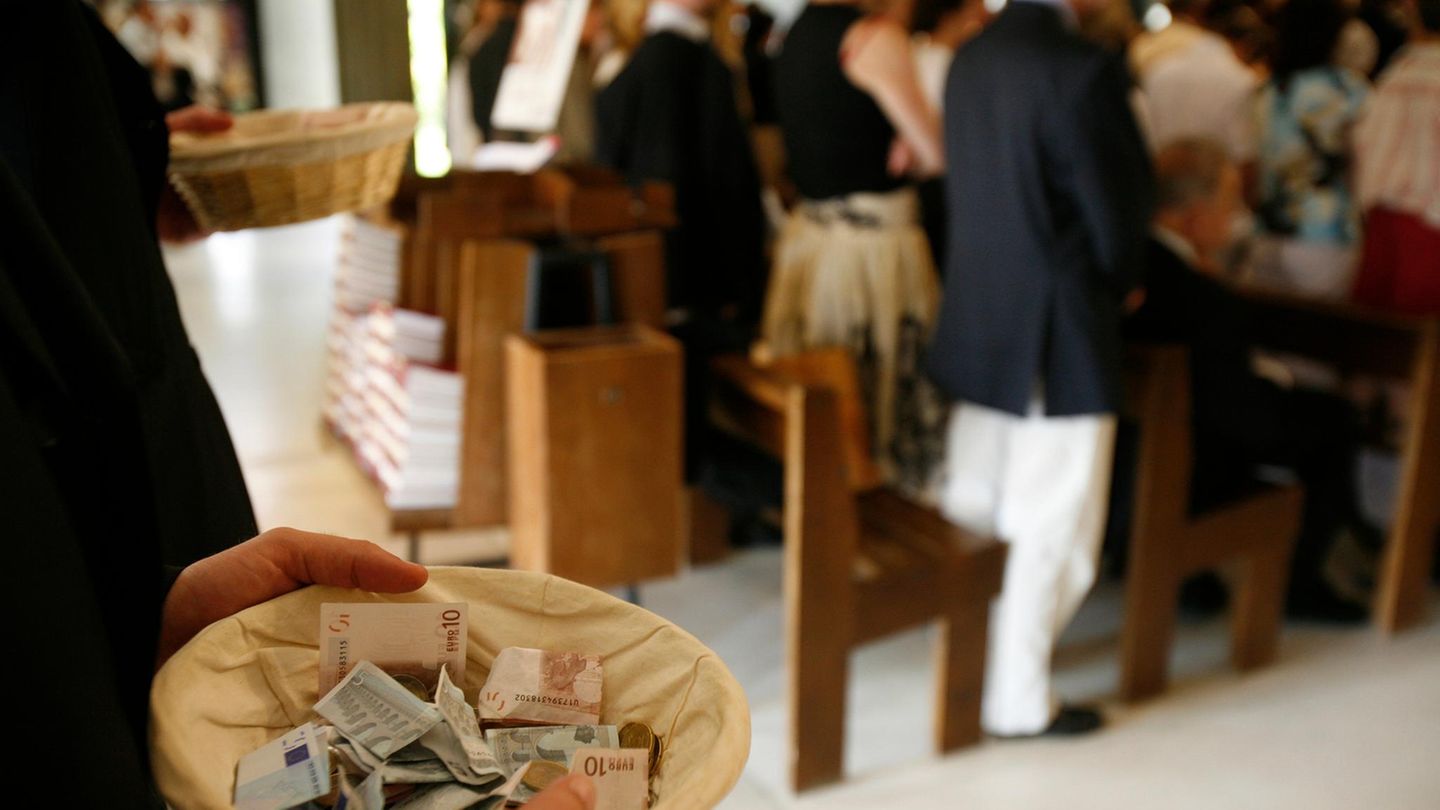The federal cabinet plans to approve the draft budget on Wednesday. The finance minister is using it to comply with the debt brake – but only thanks to a few tricks. One of them could be illegal.
When Christian Lindner presents his draft for the 2025 federal budget to the federal cabinet on Wednesday, he should be satisfied. The FDP finance minister has managed to agree on a budget with his coalition partners – despite all the doomsday stories about the end of the traffic light coalition and all the whining ministers who would have liked more money.
But above all, and this is particularly important for a liberal finance minister: Lindner’s draft complies with the debt brake. However, this is not just the result of particularly efficient financial planning, which the minister likes to boast about. Rather, Lindner and his officials are using a whole repertoire of budgetary tricks and gimmicks. An overview.
The economic downturn helps Lindner
The debt brake actually stipulates that the federal government may only take on new debts amounting to 0.35 percent of annual economic output. With an expected gross domestic product of 4.1 trillion euros next year, this makes 14.4 billion euros of permitted debt. In fact, Lindner’s draft budget, which is in line with the star but 43.8 billion euros of new debt. How can that be?
On the one hand, the current economic downturn is helping Lindner. Because if the economy weakens, as required by the debt brake, the federal government is allowed to take on more debt. In 2025, this will be an additional 9.8 billion euros, for a total of 24.2 billion euros.
That leaves 19.6 billion euros of debt that Lindner has to take on for the new budget: the majority of this will go as a loan to the German pension insurance scheme (12.4 billion euros) and as an increase in equity to Deutsche Bahn (5.9 billion). The key point here is that because these payments are offset by assets of the same amount, they are exempt from the debt brake. After all, a loan has to be repaid. And the equity in Deutsche Bahn is an investment by the federal government that is intended to yield returns in the future.
The traffic light coalition hopes for economic growth
For his next two tricks, the finance minister is relying on one thing above all: hope. Firstly, he is counting on the federal government’s planned growth initiative to boost economic growth by 0.5 percentage points. More growth means more revenue for the state, for example from taxes or investments.
Lindner assumes that this will bring the federal government an additional six billion euros next year – his first great hope. The figure is based on complex forecast models that are subject to great uncertainty. It is unclear whether the 49 measures envisaged by the federal government’s growth initiative will actually have the desired effect.
Lindner’s second great hope: that the federal government will ultimately need less money than planned in the budget.
There is still a gap of 17 billion euros between the expected revenues and the planned expenditure, known in technical jargon as “global underspending”. Global underspending is often part of budgetary practice. It reflects the experience that ministries often do not spend all their funds, so there is money left over at the end of the financial year.
However, no finance minister before Lindner had expected a sum of this magnitude. The government wants to shrink it to around nine billion euros by August. This would put it at the level of previous budgets.
Lindner wants to restructure motorways through loans
In other words, Lindner has to raise another eight billion euros. A bold undertaking, as the minister himself knows.
He has another trick in mind here: Lindner is currently having his ministry examine whether billions in subsidies to Deutsche Bahn and the Autobahn company could also be paid out as loans. In contrast to subsidies, Lindner could take out new loans for the loans that would not be subject to the debt brake. However, it is unclear whether this would be constitutional. The ministry is currently examining this as well.
This example shows how the federal government’s debt brake is making budget planning more difficult. Even the finance minister cannot ignore the fact that investments in infrastructure are necessary. Hundreds of motorway bridges across Germany are barely passable. The fact that only every second train reached its destination on time in June of this year is also due to dilapidated tracks.
Pistorius’s tank can be paid for by his successor
And then there are Boris Pistorius’ tanks. The SPD defense minister wants over 100 new Leopard vehicles, which German soldiers will then use to protect NATO’s eastern flank. The first of these are to be delivered in 2027. But they will still be far from being paid for: With the approval of the Bundestag, Pistorius can outsource his investments to the 2028 to 2030 fiscal years.
A possible successor to Pistorius will then have to include almost 2.2 billion euros in his defense budget. In any case, Pistorius will no longer be able to use the special fund for the Bundeswehr to buy the tanks: the 100 billion euros have already been largely earmarked for other purposes – and will be completely used up by 2028.
Source: Stern
I have been working in the news industry for over 6 years, first as a reporter and now as an editor. I have covered politics extensively, and my work has appeared in major newspapers and online news outlets around the world. In addition to my writing, I also contribute regularly to 24 Hours World.




